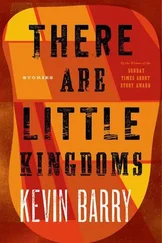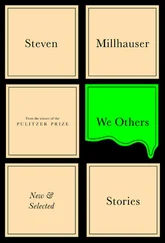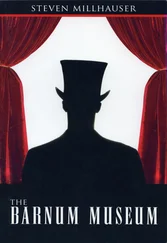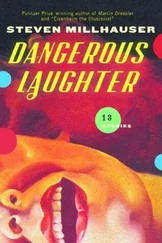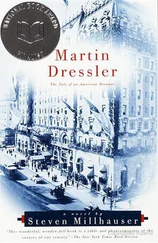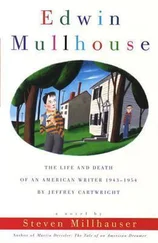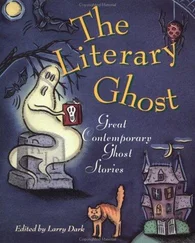[22]
DEATH SONATA
1844–45
Oil on canvas, 46 × 54 1/2 in.
The Death Sonata is first mentioned by Elizabeth in April 1844, although the entry leaves it uncertain whether Moorash had actually begun the painting or was merely speaking of a possible subject. The picture was definitely in progress by October 1844; there is no mention of it again until June 1845, when he appears to have taken it up for the third or fourth time, after an interval of several months, and we last hear of it in September. Although work on the Death Sonata alternated with work on the Totentanz (and other paintings), the evidence suggests that the Totentanz was begun earlier, and served as an inspiration for or challenge to the Death Sonata , which in turn appears to have influenced the earlier painting. The technical relation of the two, although complex, is undeniable; and they are the only two surviving paintings to employ the method of “haunting” a canvas.
The Death Sonata is in some respects a more difficult and challenging work than the Totentanz , because in it Moorash confined himself almost entirely to black. Indeed the first impression one has is of a uniform black, applied thickly with visible brushwork. The first impression yields to a second, deeper one: barely perceptible black forms are visible in or on or through the blackness. It is tempting to speak of “black on black,” but such a description would be misleading: there is properly speaking no background, but rather a thick layer of dark paint (black, purple, burnt sienna) that gradually reveals what might be called “presences.” The presences are so elusive, so deeply concealed by the very paint that reveals them, that their precise nature appears to change with different viewings; again as in the Totentanz , a deliberately uncanny effect is sought and achieved. Most responsible viewers agree that there is a presiding death-figure, a black-robed faceless figure (Havemeyer detects “an intimation of eyes”) who may or may not be seated at a piano. There is a window, with a view of black distances, and perhaps a black moon; in the presumed room, four or more other figures, flowing and shadowy, hover between the visible and the invisible. The effect of the canvas, when it is not merely exasperating, is to haunt the viewer — to draw him or her into its elusive depths with the promise of some dark revelation. The method is in certain respects more radical and mystifying than that of the contemporary Totentanz; if it seems less successful, less fully achieved, this may be due not simply to its experimental nature or its state of incompletion, but to our own failure to follow Moorash into the enigma of his art — in other words, our failure to know how to look at it.
The fact that Moorash devoted two of his last paintings to the theme of death should not mislead us into supposing that he had intimations of his untimely end. Quite apart from the attractiveness of Death as a subject for romantic painters, poets, and composers, there were good reasons in 1844 and 1845 for Moorash to be preoccupied with mortality. He was hopelessly in love with a woman who spurned him, and who must at times have made him feel that death was the only way out. He was at the traditional middle of life (his thirty-fifth birthday fell on 16 July 1845), without a shred of worldly success; despite his aggressive self-confidence, he must sometimes have felt himself a failure. His emotional life was entirely bound up in a four-way friendship that had begun to show serious signs of strain — were they not all fools of Death, dancing merrily to the grave? In addition, the Journal makes it clear that he was racked by financial worries, and by guilt over his dependence on his sister’s slender annuity. But above all, in these years he witnessed Elizabeth’s decline into a disturbing species of illness. By late 1844 the occasional headaches of earlier years had blossomed into crippling two-day or three-day headaches, often accompanied by fits of vomiting. At the same time, Elizabeth begins to record — always very briefly — mysterious “aches” in her legs, as well as occasional attacks of “vertigo.” In September 1844 Moorash traveled with her to Boston to consult a specialist in nervous disorders; Elizabeth was placed on a rigorous diet that did not cure her headaches and led swiftly to general weakness and a series of bronchial infections, which ended soon after she returned to her old eating habits. A second specialist, a friend of William Pinney’s who traveled up from New York, prescribed pills that contained a mixture of quinine, digitalis, and morphine; the pills had no result other than to dull her pain and make her lethargic, and she began to grow dependent on the soothing effects of morphine. Moorash, who was closer to Elizabeth than to any other human being, and entirely dependent on her, cannot have failed to imagine, during her worst hours, his sister’s death and his own death-in-life afterward; and it is possible that the continual, restless turn from painting to painting in these years was a sign of his fear that, once Elizabeth was gone, there would be no reason for him to go on painting.
[23]
WILLIAM PINNEY
1844–46
Oil on canvas, 34 1/8 × 29 1/16 in.
Contemporaneously with the Totentanz and Death Sonata , as well as with the lost paintings of 1844–46, Moorash turned to portraiture of a startling and original kind. Perhaps it is misleading to speak of these paintings as portraits, although several features of portrait painting remain; rather, they are dream-visions, intimations, soul-studies — what Elizabeth felicitously calls “inner landscapes” (Journal, 4 January 1846). The immense, ethereal figures have the look less of human creatures than of mythic beings; it is as if only by smashing what he once called “the mimetic fetters” that Moorash could release into paint the human mystery.
Moorash appears to have begun a portrait of William Pinney in February 1844, destroyed it or set it aside for the Totentanz and later the Haunted Paintings, and returned to it briefly in December. He was at work on it again during the early summer of 1845, at a time when he had taken up the Death Sonata after an apparent break; it is unclear whether he laid it aside or proceeded with it intermittently during the next eight months, but he was at work on it once again in March 1846, before abandoning it and all other work in May for what was to prove his final painting.
More than any other painting by Moorash, including Dornröschen , the disturbing portrait of William Pinney impresses the viewer as an illustration for a book of fairy tales. A transparent and shadowy giant bestrides a dark lake and rises into the night sky, where his streaming hair forms fiery stars and comets. He is naked and powerful; through his body we see night clouds and a glimmer of moonlit hills. But what is striking is the expression on the face: a doubting, brooding expression, a kind of suspiciousness ready to burst into anger but held in check by uncertainty. His hands are half-clenched beside his sinewy transparent thighs. The giant gives an impression of a great prisoner in chains — of power mysteriously baffled or frustrated. He radiates a peculiar aura of anguish, weakness, and danger. The figure is deliberately a creature of myth or legend, yet a comparison with the conventional chalk sketch of Pinney from 1829 (see [2]) reveals an uncanny kinship. Elizabeth writes on 4 June 1845: “My soul recognized him before my eyes did — in that terrible dream-change — a shudder passed over my body—? has seen into W’s very soul — I could not bear to look long, but turned away with a feeling of dread.”
Читать дальше



